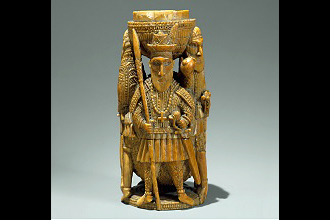New Year’s Resolution: Boost Your Health in 2019 by Lowering Your Salt Intake

By Josefa Paganuzzi, Thompson & Bender, for New-York Presbyterian Lawrence Hospital
Jan. 16, 2019: Topping the list of many people’s resolutions is living a healthier lifestyle, which typically starts with diet. Katie Campbell, the registered dietitian and certified diabetes educator for the outpatient nutrition program at NewYork-Presbyterian Medical Group Westchester, says that something as simple as reducing sodium intake can boost your health by lowering your numbers—everything from blood pressure to weight.
Salt tastes good and helps bring out the flavor in foods. But it’s significant to note that seventy-five percent of the sodium we, as Americans, consume comes from processed, prepackaged foods and restaurant food. The American Heart Association also identifies the “Salty Six”—bread and rolls, pizza, soup, sandwiches, cold cuts, and cured meats and poultry. Limiting these foods by cooking at home and incorporating more fresh ingredients can drastically reduce sodium intake. Remember, it’s impossible to completely eliminate sodium, but the goal is to make healthier, more mindful choices to reduce your overall intake.
Here are some tips for reducing salt in the diet without sacrificing flavor.
-
Always read labels and try to stay within the USDA 2,300mg per day guideline
-
Prepare your own foods and avoid purchasing convenience foods such as canned soups, frozen dinners, instant cereals, and gravy sauce mixes.
-
Purchase fresh items – fresh fruits, vegetables, whole grains, meat, and seafood products.
-
Check the packaging on meat and seafood to see if salt water or saline has been added.
-
Choose condiments wisely. Many condiments are packed with sodium. Read labels and always look for the reduced- or low-sodium versions.
-
Buy unsalted snack items.
-
Drain and rinse canned vegetables and beans.
-
Always use low-sodium versions to cook with, such as low-sodium chicken stock.
-
If you go out to eat, specify how you want your food prepared. For example, ask for sauce or dressing on the side. And look for keywords such as pickled, brined, cured, smoked, soy sauce, or teriyaki sauce—these words mean the food will be higher in sodium content.
Pictured here: Ivory saltcellar made in Benin (now part of Nigeria) for the Portuguese ca 1525-1600 in the collection of the Metropolitan Museum of Art. Photo in the public domain per CC 1.0 Universal license.
Editor's note: As a public service, MyhometownBronxville publishes articles from local institutions, officeholders, and individuals. MyhometownBronxville does not fact-check statements therein, and any opinions expressed therein do not necessarily reflect the thinking of its staff.
Government & History Directory
Bronxville is a quaint village (one square mile) located just 16 miles north of midtown Manhattan (roughly 30 minutes on the train) and has a population of approximately 6,500. It is known as a premier community with an excellent public school (K-12) and easy access to Manhattan. Bronxville offers many amenities including an attractive business district, a hospital (Lawrence Hospital), public paddle and tennis courts, fine dining at local restaurants, two private country clubs and a community library.
While the earliest settlers of Bronxville date back to the first half of the 18th century, the history of the modern suburb of Bronxville began in 1890 when William Van Duzer Lawrence purchased a farm and commissioned the architect, William A. Bates, to design a planned community of houses for well-known artists and professionals that became a thriving art colony. This community, now called Lawrence Park, is listed on the National register of Historic Places and many of the homes still have artists’ studios. A neighborhood association within Lawrence Park called “The Hilltop Association” keeps this heritage alive with art shows and other events for neighbors.
Bronxville offers many charming neighborhoods as well as a variety of living options for residents including single family homes, town houses, cooperatives and condominiums. One of the chief benefits of living in “the village” is that your children can attend the Bronxville School.
The Bronxville postal zone (10708, known as “Bronxville PO”) includes the village of Bronxville as well as the Chester Heights section of Eastchester, parts of Tuckahoe and the Lawrence Park West, Cedar Knolls, Armour Villa and Longvale sections of Yonkers. Many of these areas have their own distinct character. For instance, the Armour Villa section has many historic homes and even has its own newsletter called “The Villa Voice” which reports on neighborhood news.
Link to Village of Bronxville One Square Mile Monthly Newsletter
Village of Bronxville Administrative Offices
337-6500
Open 9:00am - 4pm excluding holidays and weekends
Bronxville Police Department
337-0500
Open 24 hours
Bronxville Parking Violations
337-2024
Open 9:00am - 4pm excluding holidays and weekends
Bronxville Fire Deparment
793-6400

















